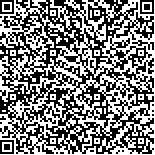下载中心
优秀审稿专家
优秀论文
相关链接
摘要

遥感全天候地表温度产品在多云雾地区意义重大,对冰川泥石流多发的藏东南地区极具应用价值,但遥感全天候地表温度空间分辨率不足限制了其在精细化灾害监测中的应用。以藏东南冰川地区为研究区,采用高程、坡度、坡向、地表覆盖类型、植被指数、地表反射率、积雪指数作为全天候地表温度的影响因子,结合移动窗口,进行多种地表温度降尺度方法的对比,进而使用最优的降尺度方法将现有的遥感全天候地表温度产品(TRIMS LST)的空间分辨率从1 km提升至250 m。利用地面站点实测数据的评价结果表明,基于梯度提升决策树(LightGBM)的降尺度方法得到的250 m空间分辨率全天候地表温度的均方根误差在白天/夜间为2.25 K/2.15 K,优于基于多元线性回归和随机森林的降尺度方法,且比原始1 km分辨率全天候地表温度的精度高0.25 K左右。基于Q指数与SIFI指数的图像质量评价结果表明,降尺度得到的250 m地表温度不仅在空间格局和幅值上与原始1 km遥感全天候地表温度一致,而且补充了大量的地表温度空间细节信息。生成得到的250 m分辨率的地表温度对于藏东南冰川地区的灾害分析具有积极的意义。
All-weather LST with higher spatial resolution are important for the detailed monitoring and early-stage warning of glacial debris flow disasters in Southeast Tibet. Based on the latest 1-km all-weather LST (TRIMS LST) product, a variety of LST downscaling methods were compared in this paper, and the optimal downscaling method was determined to generate all-weather LST at 250 m in the glacier regions in Southeast Tibet.The application of remotely sensed all-weather LST with insufficient spatial resolution in fine disaster monitoring has many limitations. At present, there are few studies on the spatial downscaling of all-weather LST. In this paper, the 1-km/250-m elevation, slope, aspect, land cover type, vegetation index, surface reflectivity, and snow index were used as the descriptors of LST. Combining the moving window strategy, a variety of LST downscaling methods were compared in this paper, and the optimal downscaling method was used to improve the spatial resolution of all-weather LST (TRIMS LST) from 1 km to 250 m.Based on the RMSE between the 250-m all-weather LST generated in different moving windows and the original 1-km TRIMS LST, and the 20×20 km is determined as the best downscaling window. The evaluation results based on the measurement data from ground sites and image quality indices show that LightGBM has optimal downscaling performance. The RMSE and MBE between the 250-m all-weather LST generated by the LightGBM and the measurement soil temperature during the day are 2.25 K and -0.01 K and during the night are 2.15 K and 0.74 K. Compared with the original 1-km TRIMS LST, RMSE and MBE were reduced by approximately 0.25 K. Evaluation results based on the air temperature from ground sites show that the 250-m all-weather LST also has good reliability at the glacier. The Q index shows that the 250-m all-weather LST generated by the LightGBM not only maintains high consistency with the original 1-km all-weather LST in terms of spatial pattern and amplitude, but also provides a large amount of spatial detailed information of surface temperature. The SIFI index further indicates that the 250-m LST has high image quality without over-sharpening.The all-weather LST with a 250-m spatial resolution can be used as reliable and high-resolution LST data for the monitoring and early warning of disasters such as glacial debris flow in the glacier area of Southeast Tibet, which have positive significance for disaster monitoring in this area. Since the spatial resolution of some descriptors (e.g., vegetation index) is 250 m, the all-weather LST can only be downscaled to a spatial resolution of 250 m in the current stage. How to improve the spatial resolution of descriptors for further determining a higher spatial-resolution all-weather LST still needs more in-depth research.

